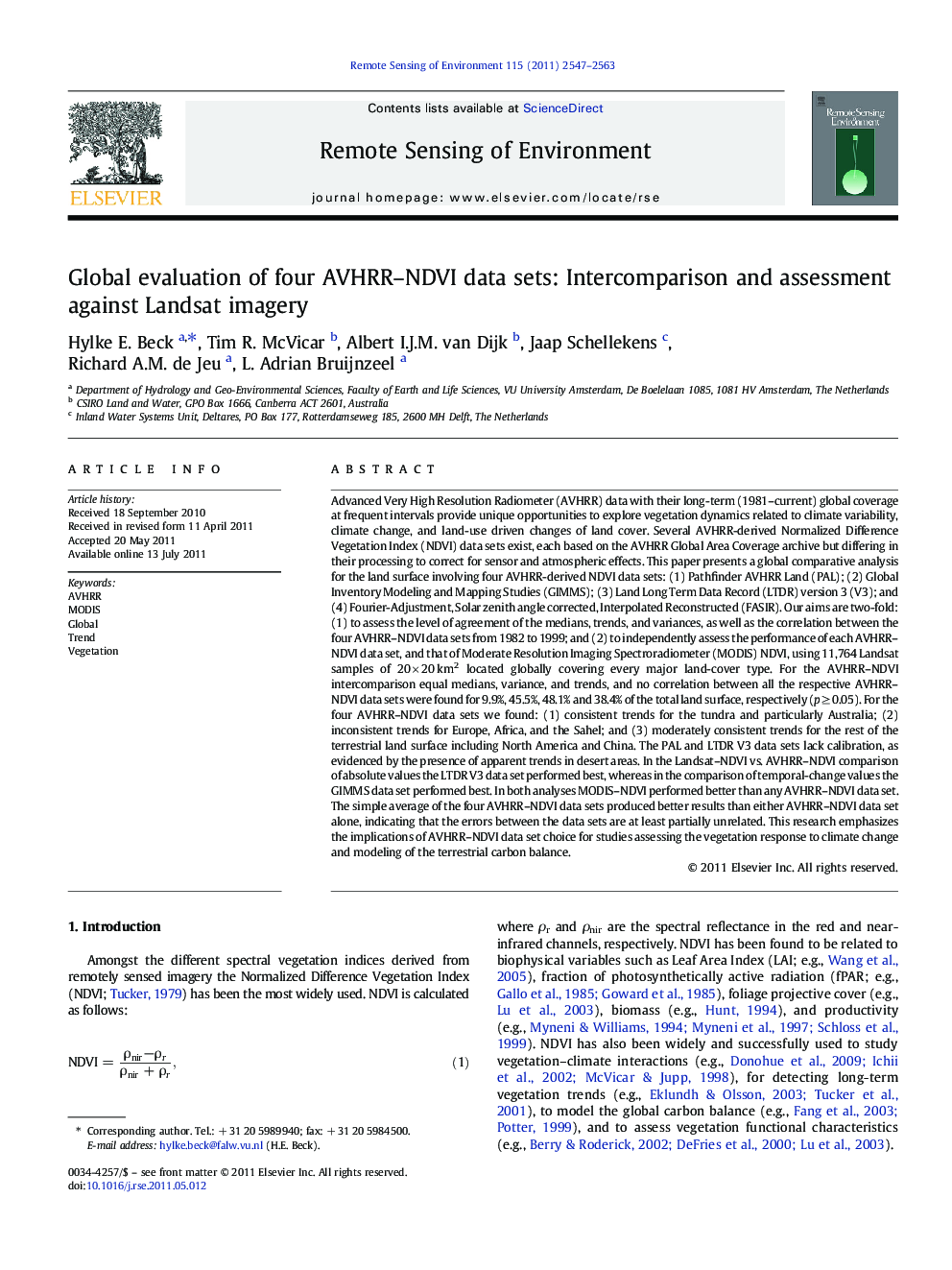| کد مقاله | کد نشریه | سال انتشار | مقاله انگلیسی | نسخه تمام متن |
|---|---|---|---|---|
| 4459303 | 1621287 | 2011 | 17 صفحه PDF | دانلود رایگان |

Advanced Very High Resolution Radiometer (AVHRR) data with their long-term (1981–current) global coverage at frequent intervals provide unique opportunities to explore vegetation dynamics related to climate variability, climate change, and land-use driven changes of land cover. Several AVHRR-derived Normalized Difference Vegetation Index (NDVI) data sets exist, each based on the AVHRR Global Area Coverage archive but differing in their processing to correct for sensor and atmospheric effects. This paper presents a global comparative analysis for the land surface involving four AVHRR-derived NDVI data sets: (1) Pathfinder AVHRR Land (PAL); (2) Global Inventory Modeling and Mapping Studies (GIMMS); (3) Land Long Term Data Record (LTDR) version 3 (V3); and (4) Fourier-Adjustment, Solar zenith angle corrected, Interpolated Reconstructed (FASIR). Our aims are two-fold: (1) to assess the level of agreement of the medians, trends, and variances, as well as the correlation between the four AVHRR–NDVI data sets from 1982 to 1999; and (2) to independently assess the performance of each AVHRR–NDVI data set, and that of Moderate Resolution Imaging Spectroradiometer (MODIS) NDVI, using 11,764 Landsat samples of 20 × 20 km2 located globally covering every major land-cover type. For the AVHRR–NDVI intercomparison equal medians, variance, and trends, and no correlation between all the respective AVHRR–NDVI data sets were found for 9.9%, 45.5%, 48.1% and 38.4% of the total land surface, respectively (p ≥ 0.05). For the four AVHRR–NDVI data sets we found: (1) consistent trends for the tundra and particularly Australia; (2) inconsistent trends for Europe, Africa, and the Sahel; and (3) moderately consistent trends for the rest of the terrestrial land surface including North America and China. The PAL and LTDR V3 data sets lack calibration, as evidenced by the presence of apparent trends in desert areas. In the Landsat–NDVI vs. AVHRR–NDVI comparison of absolute values the LTDR V3 data set performed best, whereas in the comparison of temporal-change values the GIMMS data set performed best. In both analyses MODIS–NDVI performed better than any AVHRR–NDVI data set. The simple average of the four AVHRR–NDVI data sets produced better results than either AVHRR–NDVI data set alone, indicating that the errors between the data sets are at least partially unrelated. This research emphasizes the implications of AVHRR–NDVI data set choice for studies assessing the vegetation response to climate change and modeling of the terrestrial carbon balance.
► We investigated the agreement between four AVHRR–NDVI data sets.
► In addition, these data sets and MODIS–NDVI were validated against Landsat–NDVI.
► Trends were consistent for Australia and inconsistent for Europe and Africa.
► The LTDR V3 data set is the most accurate in terms of absolute values.
► The GIMMS data set is the most accurate in terms of temporal-change.
Journal: Remote Sensing of Environment - Volume 115, Issue 10, 17 October 2011, Pages 2547–2563